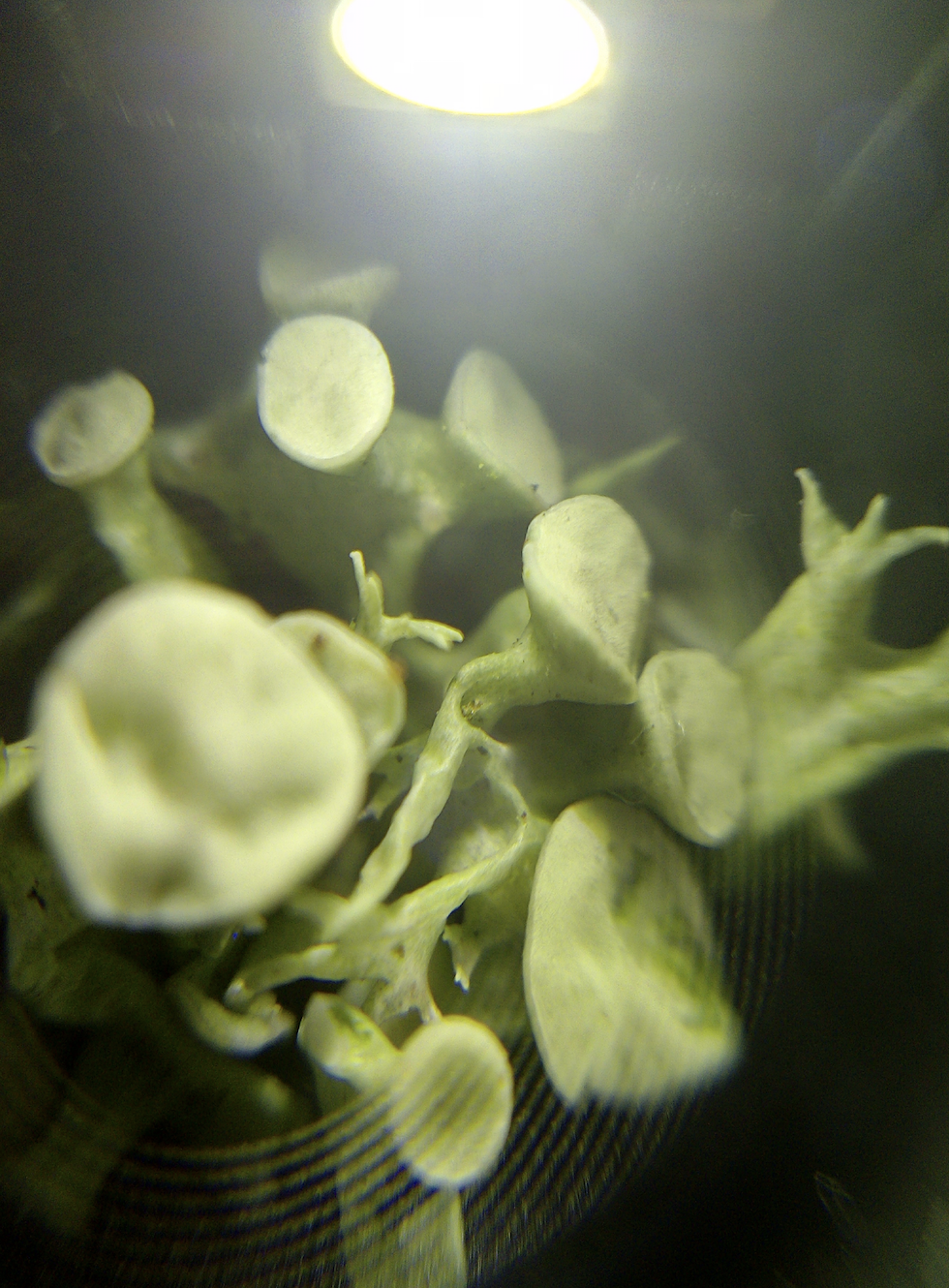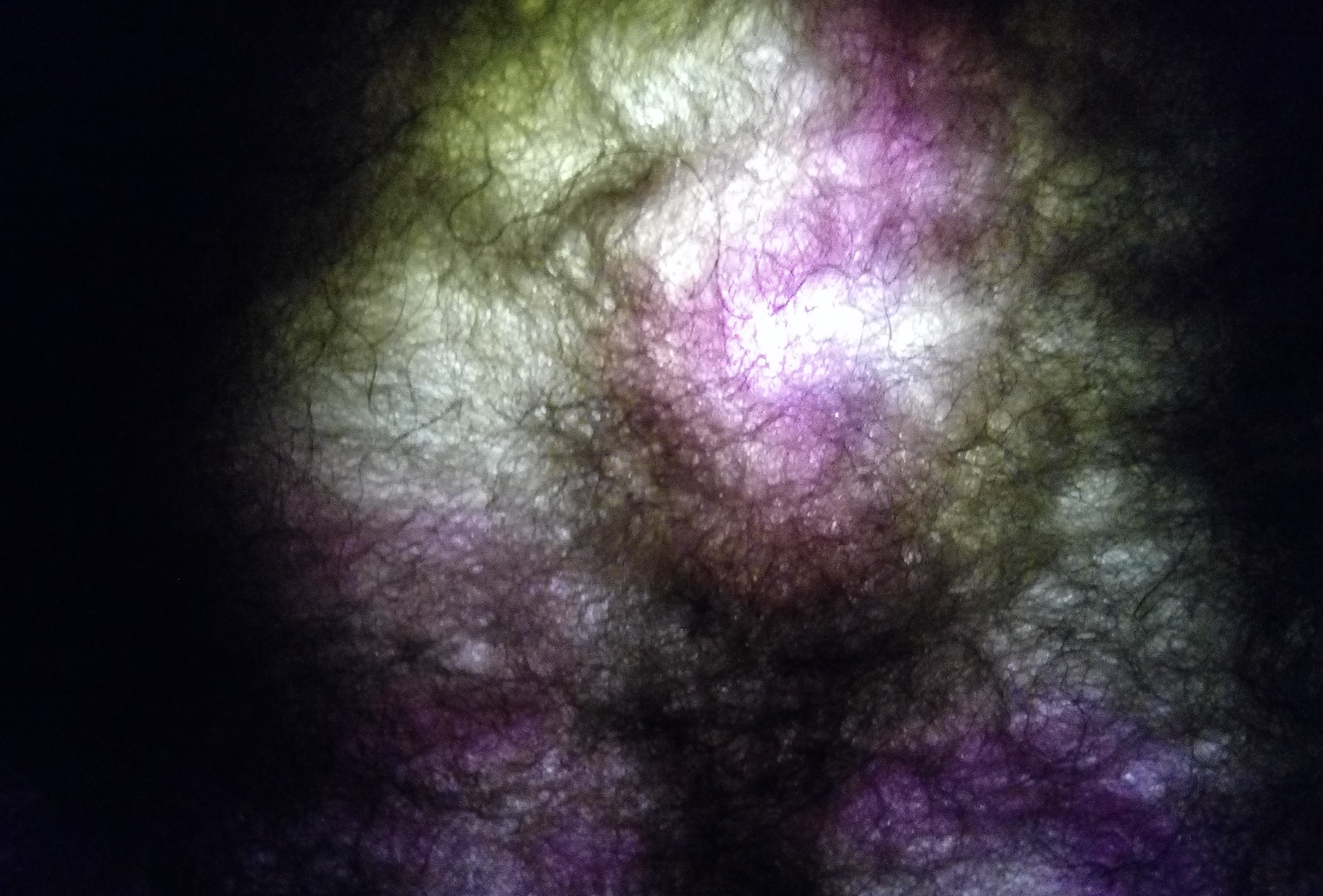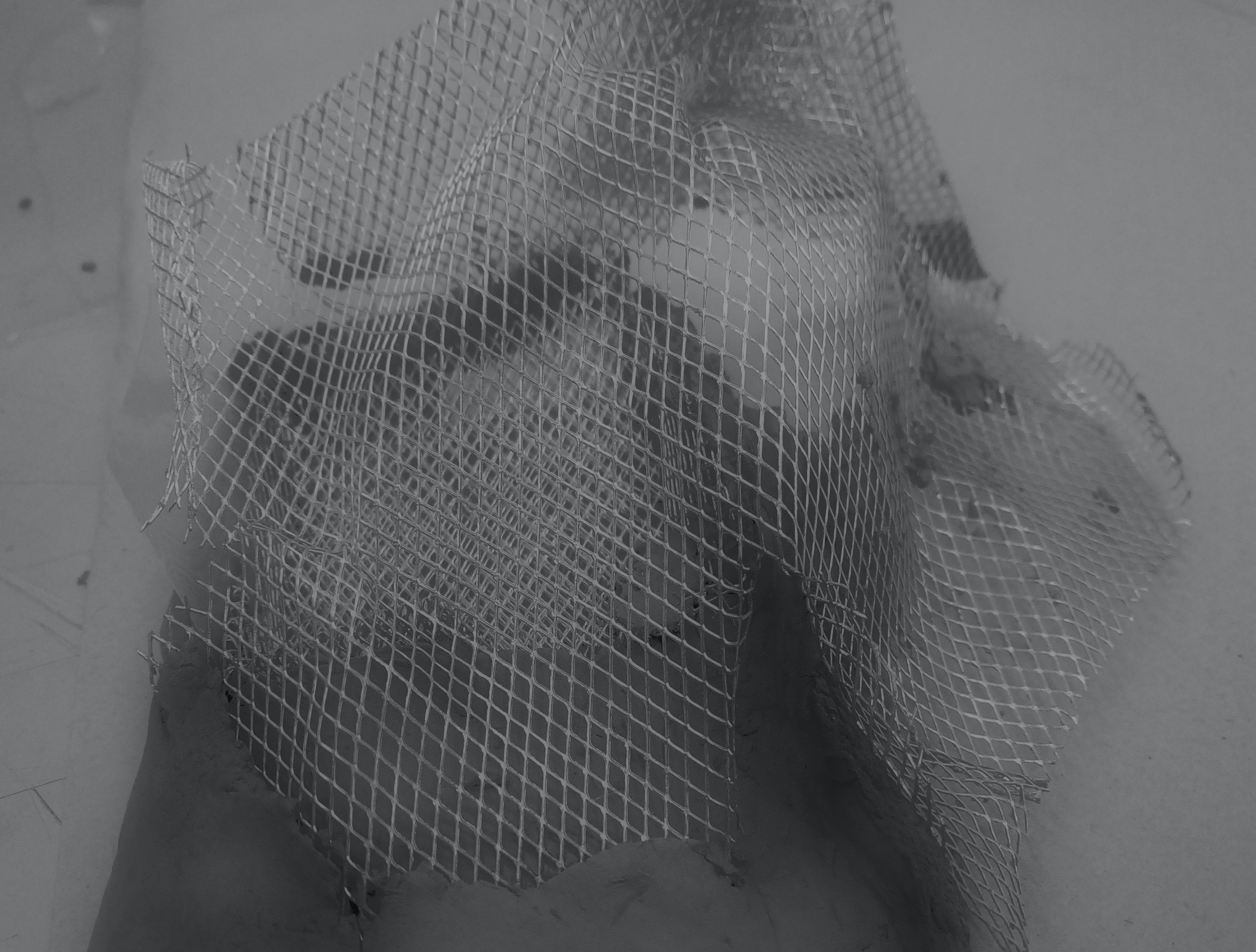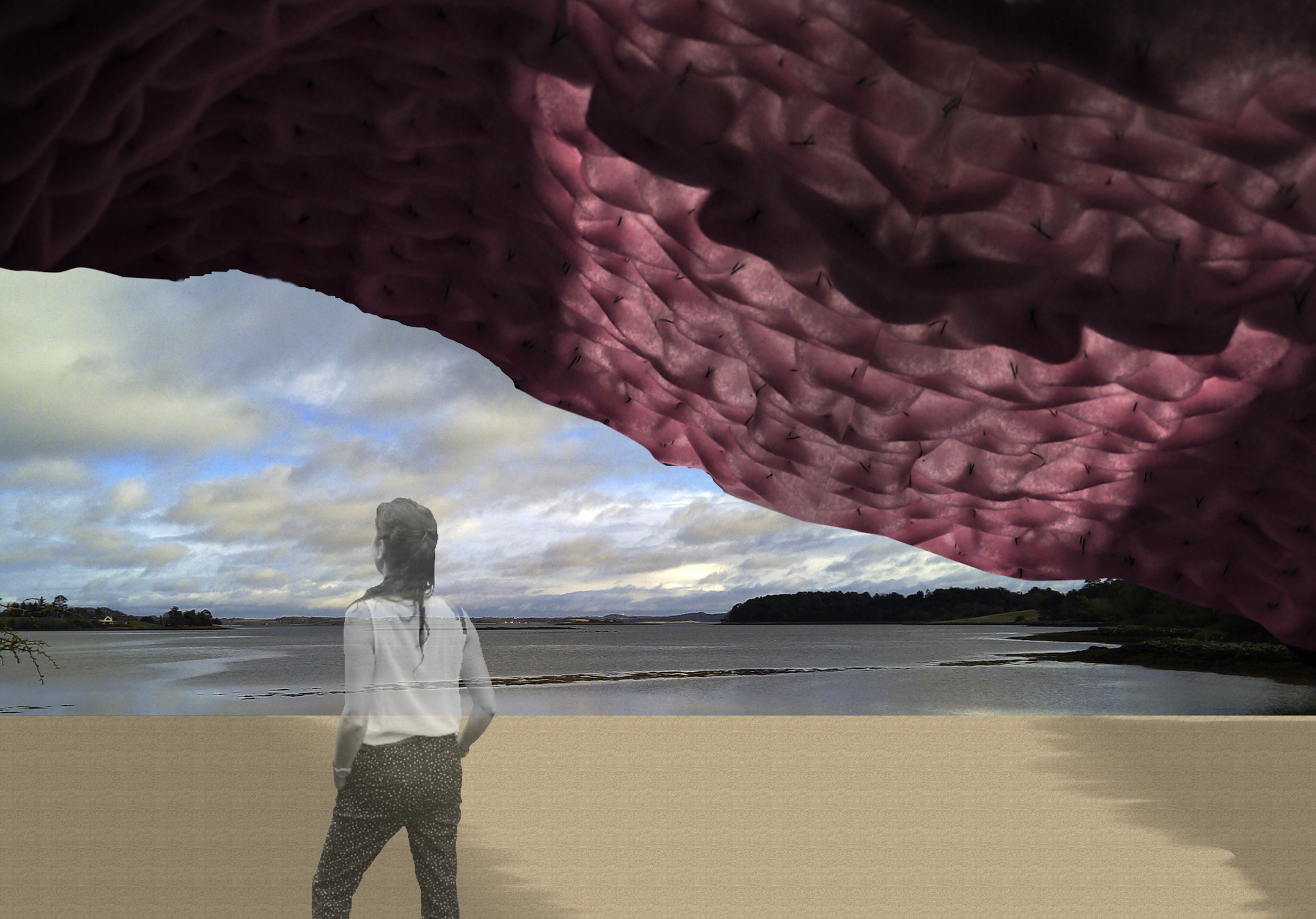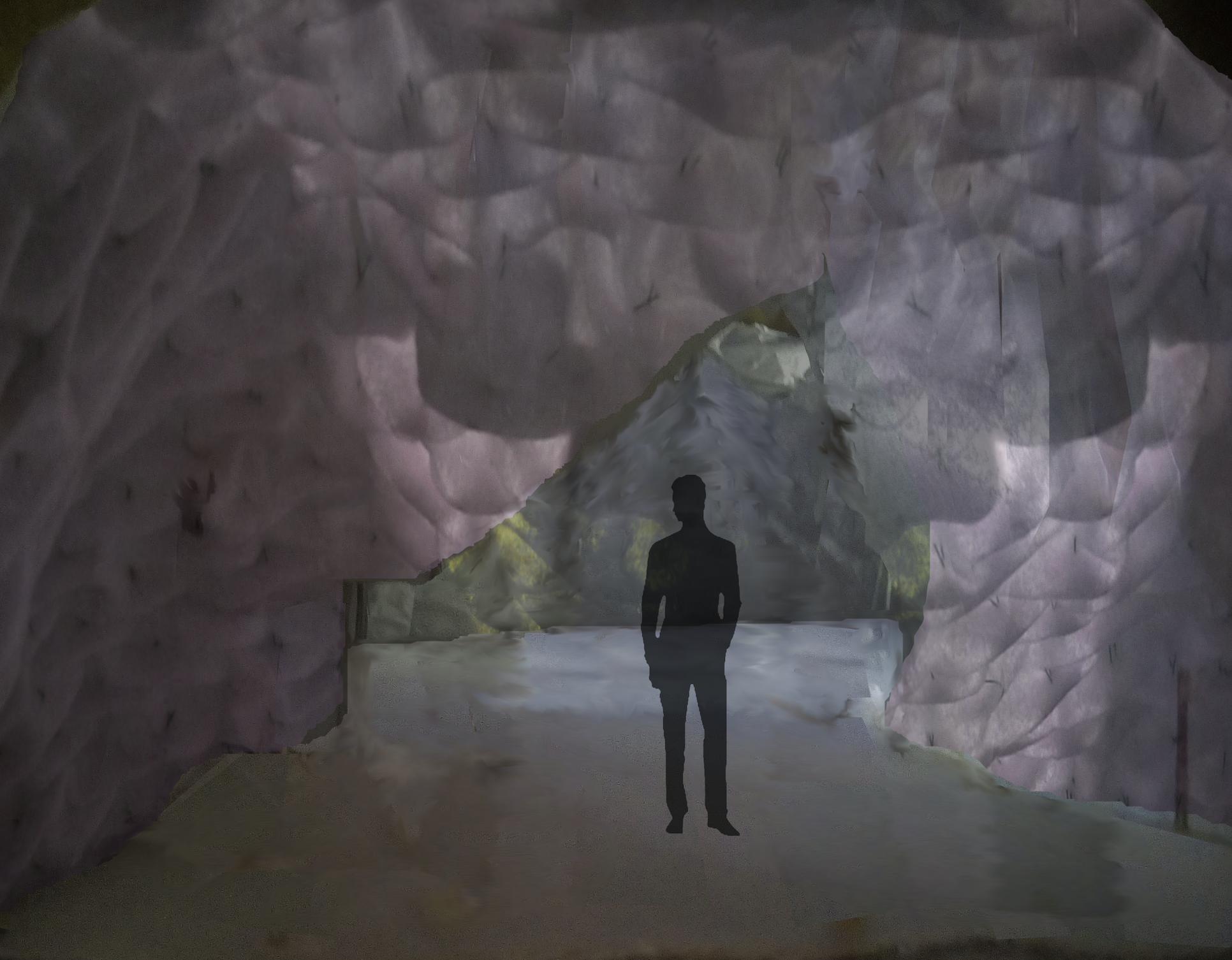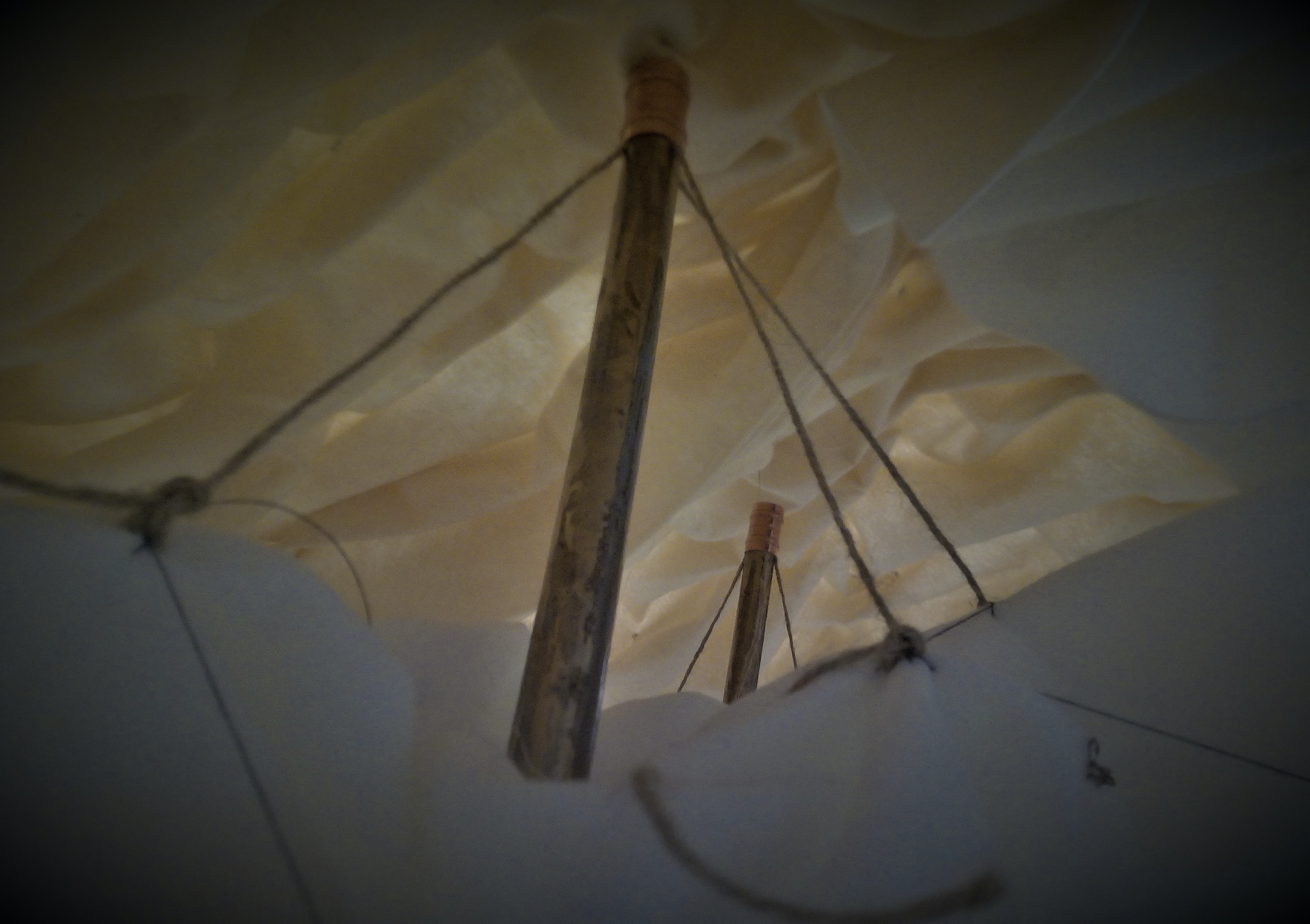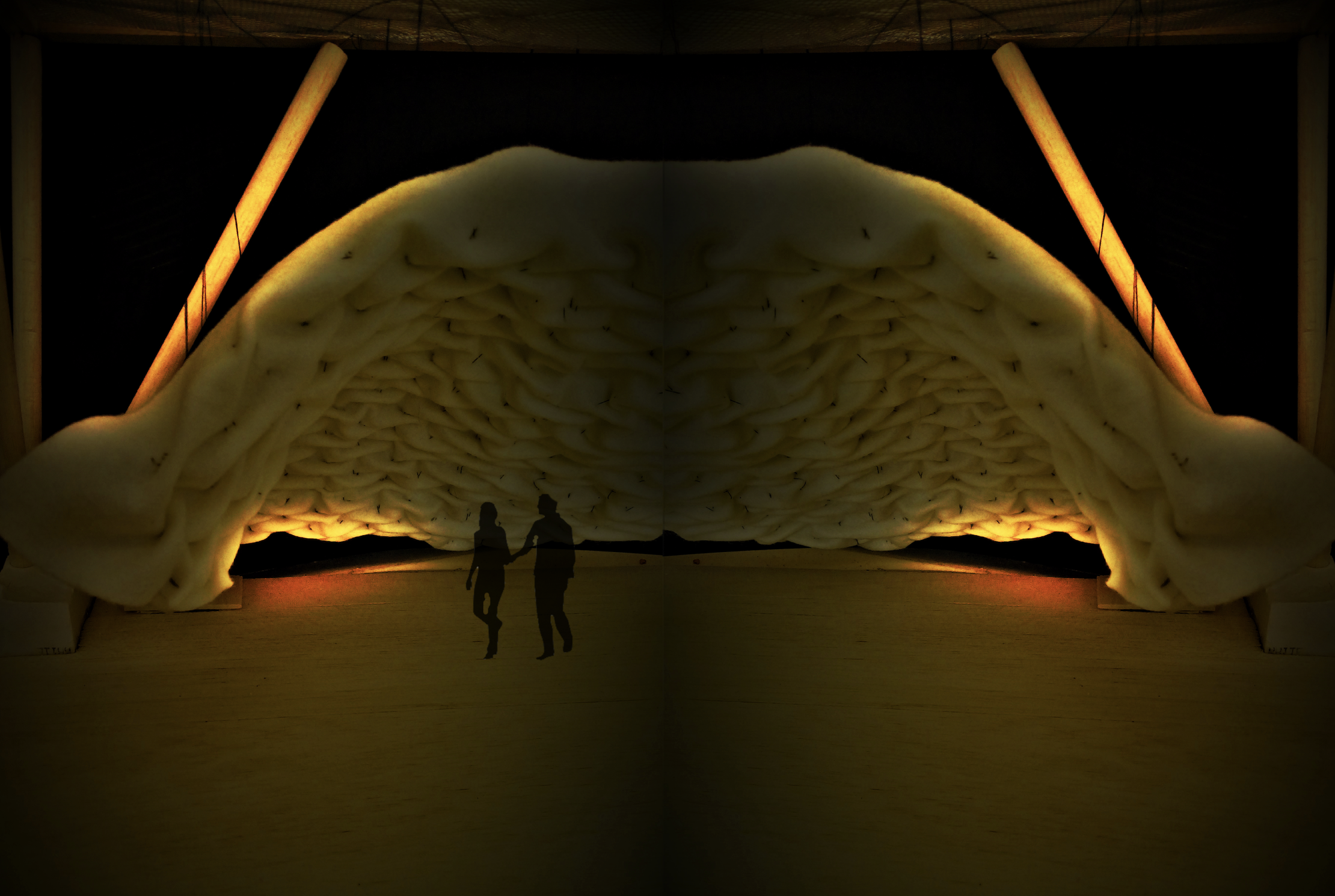#Lichen
︎ Sinead Cameron, MArch 1 Student
natural · form · symbiosis · felt · scaffold · lichen · growth
The site for the project was the beautiful natural landscape surrounding Strangford lough. I choose Nendrum Monastic site as I was immediately captivated by the pure white lichen covering the surface of the ancient rock. This immediate response to the lichen was the driving force behind my project.
Researching the many interesting facets of what make this incredibly unique organism I discovered that it is the result of a symbiotic relationship between an algae and a fungus. The algae benefit their fungal partner by producing organic carbon compounds through photosynthesis. In return, the algae benefit by being protected from the environment by the filaments of the fungus, which also gather moisture and nutrients from the environment, and (usually) provide an anchor to it. The lichen combination of fungus and algae has a very different form (morphology), physiology, and biochemistry than the constituent species growing by themselves.
Lichens are known for their filtration techniques to detoxify the air as well as being bio-indictors that communicate the purity of air by changing colour. The fact that the lichens covering the walls of the monastic site are so white indicates of how clean the air around Strangford lough is. And so the concept for my project was a pavilion that is derived from the internal logic of lichen, that allows for a cleaner environment for the lichen themselves I wanted the surface of the pavilion to promote the growth of flora and fauna in the area supporting the wider ecosystem in Strangford, while offering a place that not only is an extension of the natural landscape, but frames views out onto the lough, highlighting its beauty.
International Concrete Design Competition 2017/18 Theme: Tactility - JOINT WINNER (IRELAND)
